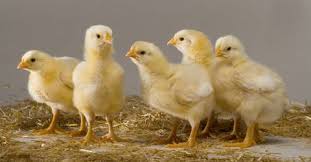Infectious bronchitis Is a highly contagious viral respiratory infection of chickens, however the virus will also infect the urogenital and gastrointestinal tracts. The clinical signs of infectious bronchitis are non-specific and so laboratory tests are required to confirm diagnosis. Clinical signs are strongly dependent on the tropism (preferred tissue to infect) of the strain, but commonly include include coughing, sneezing and gasping in young birds, loss of appetite and wet litter. Infectious bronchitis (IB) is an acute, highly contagious, viral respiratory disease of chickens, characterized by tracheal rales, coughing, and sneezing. In addition,…
Day: February 20, 2024
Infectious Coryza (new)
Infectious coryza is a serious bacterial disease of chickens which affects respiratory system and it is manifested by inflammation of the area below the eye, nasal discharge and sneezing. The disease is found all over the world causing high economic losses. Take note: Infections Coryza is usually acute and sometimes chronic, highly infectious disease of chickens, occasionally pheasants and guinea-fowl. Infectious Coryza is characterised by catarrhal inflammation of the upper respiratory tract, especially nasal and sinus mucosae. Infectious Coryza is caused by the bacterium Haemophilus paragallinarum and is seen in many countries…
RAISING A DISEASE-FREE POULTRY FARM (new) I Mshindo Media
The cheapest and most-effective method of disease control is through implementing *biosecurity*. *Bio security* ensures that the health and well being of your birds are protected hence improving the immunity and performance of your flock. *Bio security* is a management practice designed to prevent entry of diseases into a farm, and limit spread. It is an essential element to a good animal husbandry process. It is important that every poultry farmer checks if their bio security plans are strong enough to keep out diseases. Infectious diseases are introduced on farms through:…
Antibiotics for Treatment of Clinical Mastitis I Mshindo Media
The Use of Antibiotics for Treatment of Clinical Mastitis Introduction Mastitis is the most common disease of dairy cows and the most common reason that cows are treated with antibiotics . Mastitis is a bacterial infection of the udder which causes inflammation (host defenses responding to the infection). What Types of Bacteria Cause Clinical Mastitis? What Should We Consider before Treating Mastitis? Dairy farmers should work closely with their herd veterinarian to help develop treatment protocols, provide oversight for appropriate drug use, and monitor the success of treatment.Intramammary antibiotic tubes…
Types of Chicken and their benefits (new) – Mshindo Media
The chicken is a type of domesticated fowl, a subspecies of the red junglefowl. They are one of the most common and widespread domestic animals, with a total population of 23.7 billion as of 2018, up from more than 19 billion in 2011. There are more chickens in the world than any other bird or domesticated fowl. Lifespan: 5 – 10 yearsScientific name: Gallus gallus domesticus Order: Landfowl Higher classification: Red junglefowlPhylum: ChordataMass: Sebright chicken: 620 g, Booted Bantam: 850 g, Ermellinata di Rovigo: 3.4 – 3.9 kg TYPES OF CHICKEN . * MEAT CHICKEN *This is one of the chicken groups that is…
Viral Infections/Gumboro (Infectious Bursar Disease) I Mshindo Media.
(Infectious Bursar Disease) Ni ugonjwa unaosababishwa na virusi ambao hushambulia zaidi kuku, bata maji na bata mzinga. Kuku na batawadogo hadi wiki 12 ndio wanaoathirika zaidi. Jinsi Ugonjwa Unavyoenea.•Chanzo cha maambukizi ni maji, chakula na vifaa/vyombo vya shambani vilivyochafuliwa na kinyesi chakuku wagonjwa na wenye vimelea.•Maambukizi pia huenea kupitia mfumo wa hewa, kwa vumbi lenye vimelea katika mabanda. Chukua Tahadhari.Wageni, wafanyakazi na magari yanaweza kusambaza ugonjwa kutoka shambahadi shamba au banda hadi banda. Hii ni pamoja na kuku hai, vifaa/vyombo vya shambani na bidhaazitokanazo na kuku (mayai, nyama, manyoya na…







